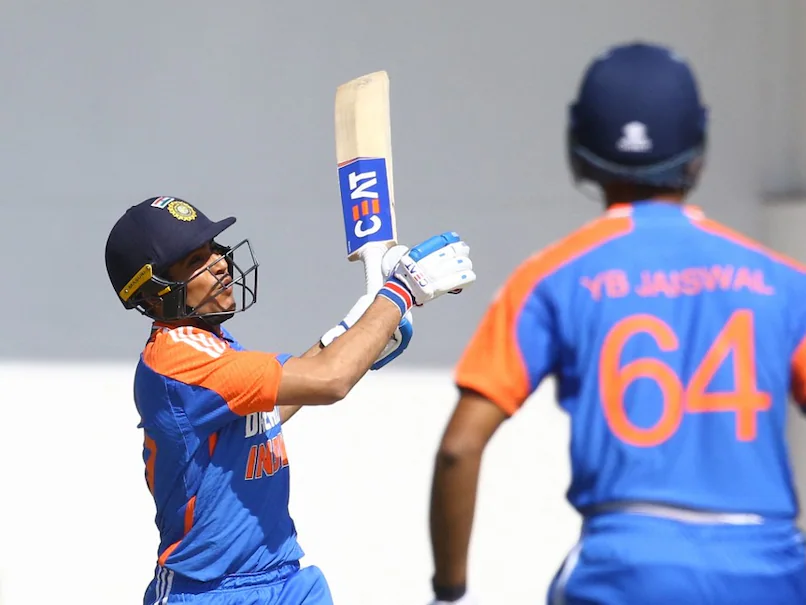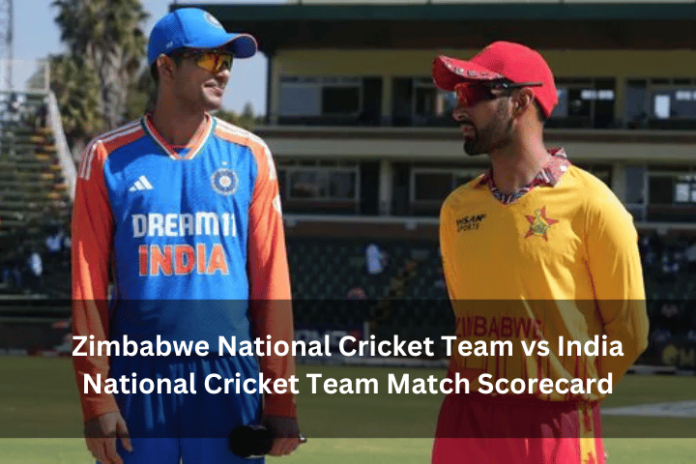The recent encounter between the Zimbabwean and Indian national cricket teams was a highly anticipated match that captured the attention of cricket fans worldwide. The match scorecard serves as a vital tool for analyzing the performances of both teams, showcasing key players, pivotal moments, and the overall dynamics of the game. This article delves into the match’s highlights, breaking down the scorecard and providing insights into what this means for both teams moving forward.
Overview of Zimbabwe’s Performance
Key Players and Contributions
The Zimbabwe national cricket team, known for its fighting spirit, performed commendably against a much stronger Indian side. Batting first, Zimbabwe aimed to set a competitive target, and their innings were characterized by resilience and strategic partnerships. The scorecard reveals that Craig Ervine, the team captain, played a crucial role, scoring an impressive 78 runs off 92 balls. His innings were marked by patience and calculated aggression, which helped stabilize the innings after an early wicket.
The middle order also contributed significantly, featuring players like Sikandar Raza and Sean Williams. Raza scored 55 runs, showcasing his ability to rotate the strike and find boundaries when needed. Williams’ late innings push, scoring 34 runs off 25 balls, ensured Zimbabwe reached 240 runs. The scorecard highlights these contributions as vital, especially in a match against a team known for its strong bowling attack.
On the bowling front, Zimbabwe’s attack was spearheaded by Blessing Muzarabani, who took three wickets for 49 runs in his ten overs. His ability to swing the ball and create pressure at crucial moments helped keep India in check during their innings. The Zimbabwean players’ collective effort made for an exciting contest and showcased their growth and potential on the international stage.
Analysis of India’s Performance

Key Players and Tactical Approach
The India national cricket team, a powerhouse in international cricket, entered the match as favorites, with a lineup filled with talent and experience. Chasing a target of 241 runs, India approached the innings with a balanced mix of aggression and caution, looking to build partnerships while maintaining a steady run rate.
Shubman Gill opened the batting and played a pivotal role in India’s successful chase, scoring a fluent 90 runs off 85 balls. Elegant strokes and calculated aggression characterized his innings, setting the tone for the chase. The partnership between Gill and Virat Kohli was crucial, as they built a solid foundation, rotating the strike and finding boundaries at regular intervals.
Hardik Pandya, the middle-order batsman, also contributed significantly, scoring 40 runs off 30 balls. His ability to accelerate the innings during the crucial middle overs played a key role in keeping the required run rate in check.
Jasprit Bumrah led the attack with exceptional skill on the bowling side, taking four wickets for 42 runs. His ability to bowl yorkers and change his pace made it challenging for Zimbabwe’s batters to settle in. Overall, India’s combination of experienced players and emerging talents showcased their depth and adaptability, paving the way for a successful chase.
Key Match Statistics and Insights
Match Scorecard Breakdown
The scorecard from the Zimbabwe vs. India match provides a comprehensive overview of the game, detailing the contributions from both teams and the ebb and flow of the contest. Zimbabwe, batting first, set a respectable target of 240 runs, with their innings reflecting a mixture of solid partnerships and individual performances.
As highlighted, Craig Ervine and Sikandar Raza were instrumental in building Zimbabwe’s innings, while their bowlers, particularly Blessing Muzarabani, kept India under pressure during their innings. The scorecard indicates that Zimbabwe’s total was competitive, especially against a formidable Indian side.
In response, India’s innings were marked by strategic partnerships and consistent scoring. Shubman Gill’s standout performance and the contributions from the middle order played a crucial role in India’s successful chase. The scorecard demonstrates how India effectively capitalized on their opportunities, leading to a satisfying victory.
The match statistics further reveal that India’s bowlers restricted Zimbabwe to a modest total, while their batting depth enabled them to chase down the target with relative ease. Such insights from the scorecard are essential for fans and analysts alike, as they provide context to the match and its implications for both teams.
Conclusion
The match between the Zimbabwe national and India national cricket teams provided a thrilling spectacle characterized by noteworthy performances and strategic battles. Zimbabwe’s determination and fighting spirit were evident, while India’s depth and experience ultimately paved the way for their victory. As both teams reflect on this encounter, the insights gained will be invaluable for preparing for future competitions. For cricket fans, the match scorecard serves not only as a record of the game but also as a reminder of the unpredictable nature of cricket, where every match offers new stories and opportunities.
Frequently Asked Questions (FAQs)
What was the final score of the Zimbabwe vs. India match?
The match’s final score saw India successfully chase down Zimbabwe’s total of 240 runs, finishing with a score of 241 runs for the loss of 5 wickets.
Who were the top performers for Zimbabwe in the match?
Critical performers for Zimbabwe included captain Craig Ervine, who scored 78 runs, and Sikandar Raza, who contributed 55 runs. Bowler Blessing Muzarabani was also a standout, taking three wickets for 49 runs.
How did India’s batting lineup perform?
India’s batting lineup was led by Shubman Gill, who scored 90 runs, while Virat Kohli and Hardik Pandya contributed 50 and 40 runs, respectively. The team showcased strong partnerships that facilitated their successful chase.
What was the significance of this match for both teams?
This match was significant for both teams. It highlighted Zimbabwe’s growing competitiveness on the international stage and reinforced India’s strength as a cricketing powerhouse. Both teams can draw valuable lessons from the encounter to prepare for future tournaments.
Where can I find the detailed match scorecard?
The detailed match scorecard, including individual performances and statistics, can typically be found on official cricket websites such as ESPN Cricinfo, the ICC website, or other sports news platforms that cover cricket extensively.
What are the upcoming fixtures for both teams?
Both teams’ upcoming fixtures can be found on their official cricket boards’ websites or through major sports news outlets. These platforms provide updated schedules, venues, and opponents for future matches.


